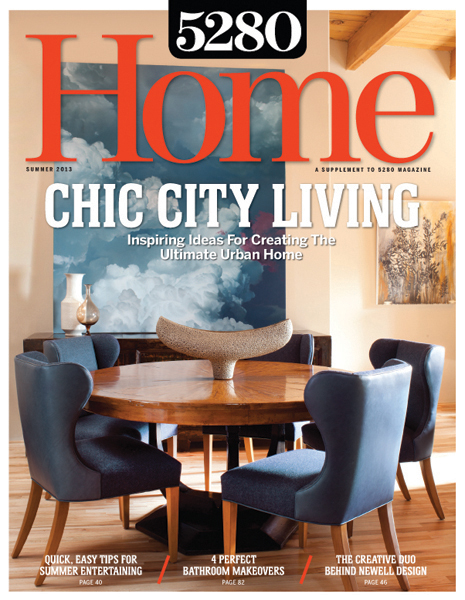The Local newsletter is your free, daily guide to life in Colorado. For locals, by locals.
The FourMile Canyon fire was casting an orange glow just beyond Michelle Wieber’s Salina home five miles west of Boulder. With an evacuation order in place, she frantically gathered family photos, art, and antique jewelry; her son Colton helped neighbors do the same. Her husband, Eric Stevens, the assistant fire chief for the Four Mile Fire Department at the time, was already in the field responding to the call. Days later, as the flames subsided, the family returned to their idyllic mountain community (population: 70) to find that their beloved 1890s, hand-hewn log home, guest house, and barn had been spared.
Just two years earlier, the couple had completed an addition to the historic home that provided essential living space for their family of four. “Everyone who worked on the house held their breath during the fire,” says Wieber. “It had been a labor of love for everyone involved.”
The addition of a mudroom, master bedroom and bath, and sitting room allowed their growing boys, Colton and Caleb, now 15 and 12, respectively, to have separate bedrooms for the first time—and for Wieber and Stevens to have a retreat of their own. “We really wanted a separate space for us so we could close the door and let the kids have their craziness,” Wieber says.
Even before children, the couple lived in every inch of the 1,520-square-foot, one-and-a-half-story house, comprised of a tiny dining room, kitchen, living area, bathroom, and laundry room (in a former root cellar) on the first floor and two small bedrooms upstairs. The couple spent years reversing the previous owner’s Southwest style and painstakingly restoring the home’s character—peeling back layers of wallpaper and carpet to reveal raw logs, stacked Lincoln Log–style, and old-growth fir floors. To optimize floor space, they tapped their friend and cabinet-maker, Bruce Jaffe of Bruce Jaffe Design, to craft clever built-ins for storage that wouldn’t impede circulation. “We made it work for years and years,” explains Wieber of the compact living quarters. “But we were at the point where we had to either add on or move.”
To counter the mazelike feel and expand the family’s livable space, the couple hired preservation-minded architect Lisa Egger. “They wanted the addition to be of its time,” Egger says, “but not stand out.”
With its weathered, reclaimed Wyoming snow-fence siding and gray granite walls—constructed to emulate the hand-stacked walls built by the miners—the 565-square-foot addition feels like a natural extension of the main house. Even the rusted, corrugated Cor-Ten roofing is a nod to the home’s mining-town roots.
Like the exterior, the interior is modern functionally but embodies the rustic character of the original house. The couple selected wide-plank eastern white pine for the floors; milled-wood paneling for the walls and ceilings; a sliding barn door for the closet; lots of built-ins, like a desk; and a soft, coastal color palette throughout. Egger’s use of vaulted and varied ceiling planes adds unexpected airiness and luxury to the addition that belie its small footprint.
A recent visitor commented that the house “envelops you like a warm hug.” Stevens and Wieber feel the same way about their 123-year-old miner’s log cabin—its life extended another 100 years with a pint-sized addition that makes all the difference.









